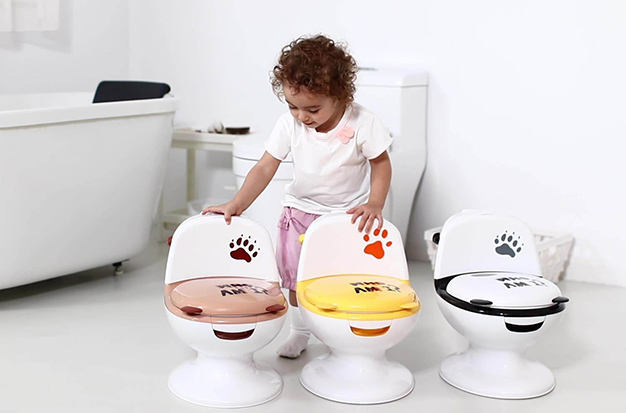In vitro fertilization (IVF) is frequently the first concept that people think of when they hear the phrase “fertility treatment.” With this well-liked technique, an egg is fertilized outside of a woman’s body, and the fertilized eggs are then placed back inside the uterus for implantation. An effective pregnancy is the desired outcome. A woman has other fertility options besides IVF if she wants to get pregnant. Women can achieve conception through a different option called intrauterine insemination (IUI).
What is IUI?
Artificial insemination is a term used to describe IUI. Because a fertility specialist uses a catheter to directly insert sperm into a woman’s uterus during the ovulation window, intrauterine insemination (IUI) differs from in vitro fertilization (IVF). The procedure may be performed for a variety of reasons which can include:
- The use of donor sperm
- Low sperm motility in a male partner
- A woman with endometriosis
- Cervical abnormalities
- Semen allergy
- Problems with ovulation
Advantages of IUI:
- It is less invasive
- In comparison to IVF and ICSI, it is less expensive.
- Less stress on the body
- In order to produce high-quality sperm, washing procedures are used to remove prostaglandins, infectious agents, antigenic proteins, non-motile spermatozoa, immature germ cells, and other contaminants. Additionally, it improves the quality of the sperm by reducing the production of free oxygen radicals after sperm preparation.
- When compared to regular sexual activity, the chance of IUI treatment is very high.
- The doctor inserts the catheter into the vagina and cervix, either with or without transvaginal ultrasound guidance. The catheter is then advanced through the cervical canal and directed toward the top of the uterus and either the right or left fallopian tube by the doctor. Last but not least, the catheter is used to inject the sperm into the uterus.
- You will be instructed to stay in the recovery room for 20 minutes before leaving after the procedure, which only takes 15 to 20 minutes.
- Anesthesia is not required for this procedure. It is not painful.
Disadvantages of IUI:
Even though IUI is a fantastic option for many couples, there are some difficulties. Occasionally, IUI can’t solve every fertility problem. A few disadvantages of IUI treatment are:
- In the absence of the conditions below, such as clear and undamaged fallopian tubes, issues could arise.
- The partner carrying the pregnancy needs to be ovulating
- Sperm should move about with some degree of fluidity.
- Comparatively to other procedures like IVF, the success rate for IUI is about 20%.
- The use of fertility medications increases the risk of conceiving multiples. So, internal ultrasound is strongly advised.
- Some people may experience a few side effects that are brought on by the fertility medications taken during the IUI treatment rather than the actual procedure. To increase the likelihood that IUI will be successful, prescription drugs are given. These drugs will encourage the release of numerous oocytes for artificial insemination from your ovaries. Mood swings, hot flashes, breast tenderness, nausea, bloating, headaches, swelling at the injection site, painful and swollen ovaries, pelvic discomfort, and ovarian cysts are just a few of the side effects that these drugs may produce. These side effects will disappear once.

How Does IUI Differ from Traditional Pregnancies?
The process of conception differs significantly between an IUI and a conventional pregnancy. A sperm and egg are fertilized by one another during sexual activity in a conventional pregnancy. Sperm travel from the vagina to the uterus via the cervix and on to the fallopian tubes. In an IUI pregnancy, the sperm must travel less because it is inserted directly into the vagina of the woman. The two pregnancies will proceed normally following conception.
Are There Risks With An IUI Pregnancy?
An IUI pregnancy carries no significant risks. However, common side effects can include getting infected after the procedure or getting spotting from the process of having the catheter inserted in the uterus. Whether a woman is taking ovulation-inducing fertility drugs will determine whether she experiences a different common side effect. Multiple births are more likely in women who take medication. Women who have multiple pregnancies are therefore more likely to go into early labor or deliver babies who are smaller at birth.
How Long is the Procedure?
A typical IUI procedure lasts not too long. Frequently, the procedure can be finished in a clinic or doctor’s office, and the entire visit lasts 15 to 30 minutes. A minute or two is all that is needed for insemination. Usually, no prior medication is necessary. When a couple chooses IUI, the man typically provides a sample of semen, which is washed and concentrated before the exam, which can increase the likelihood of conception. The woman typically rests in a reclined position for 10 to 30 minutes following the sperm insertion before being allowed to leave for home. To increase the likelihood of conceiving, some clinics will perform a second procedure the following day.
Is IUI the Right Choice?
IUI is one of many fertility treatment options available to women and couples who wish to conceive but have had difficulty doing so naturally. An IUI pregnancy is almost identical to a conventional pregnancy, with the exception of the conception process and potential risks associated with combining the procedure with fertility drugs. IUI is regarded as a fantastic, relatively non-invasive way to help people increase the chances of successfully conceiving, despite the fact that success rates can vary depending on age and underlying fertility issues. Consult a fertility expert for more details.
What Are the Biggest Differences Between IUI and IVF?
Fertilization occurs internally during IUI, which is a key distinction between IUI and IVF. In other words, the sperm is injected right into the uterus of the woman. The embryo therefore implants there as well if fertilization is successful.
With IVF, fertilization occurs in a lab externally, or outside of the uterus. One or more of the successfully fertilized eggs would then be placed in the woman’s uterus following the successful combination of the sperm and the egg for fertilization. The fertilized egg should then successfully implant in the uterine lining, leading to pregnancy and the delivery of a full-term baby or babies.
IUI is less successful than IVF on average. IVF is much more expensive, but artificial insemination is less invasive. Prior to beginning IVF, it is generally advised that couples try three cycles of IUI.
The US IVF success rate for women of all ages is around 30%, according to the Society for Assisted Reproductive Technology (SART), but it rises if the woman is under 35.
What Do IUI and IVF Have in Common?
There are some similarities between IVF and IUI, most of which have to do with prepping for treatment and the fundamental procedures of human conception.
Prior to insemination or fertilization, both IUI and IVF may include a course of fertility medications to improve fertilization success rates or, in the case of IVF, to promote ovulation and facilitate egg retrieval. Additionally, both therapies may involve techniques to separate the best sperm from supplied samples for use in fertilization.
An egg must be fertilized, implant in the uterine lining, and develop into one or more full-term infants for IVF or IUI to be successful. That is essentially the most basic explanation of how a human is created.
What Makes You a Candidate for IUI Vs IVF and Vice Versa?
The more frequent fertility treatment is IUI, or artificial insemination, as was previously mentioned. This is due to the fact that it is less invasive and fertilization occurs naturally rather than in a lab, aside from the fact that it is frequently the first treatment that many people try. Because of this, after the male partner’s ejaculate is processed, artificial insemination requires the availability of 5–10 motile sperm, functioning ovaries, viable eggs, and fallopian tubes.
You might think about IVF if you or your partner don’t meet the criteria for IUI. IVF is used to treat a variety of infertility issues, such as uterine, tubal, and endometrial problems, as well as age-related issues, low sperm counts and/or motility, unexplained infertility, and others. For people who want to use donor eggs or a surrogate, IVF may also be the best option.
FAQs
Is IUI Considered High Risk Pregnancy?
Intrauterine insemination is a relatively simple and safe procedure, and the risk of serious complications is low. Infection is a risk. The procedure carries a very small risk of infection.
Are Miscarriages More Common With IUI?
The evidence suggests that chance of miscarriage following single IUI is 1.5% and the chance following double IUI would range between 1.5% and 5%.
Can IUI Prevent Birth Defects?
Having an IUI does not increase the risk of birth defects. Whether conceived naturally or through IUI, all children have a 2%–4% chance of having birth defects.
How Many Babies Can You Have With IUI?
IUI cycles have live birth rates of 5 to 15% per cycle and multiple birth rates of 8 to 30% per pregnancy for all patients. As we mentioned, while this “multiples-per-pregnancy” rate is high, since IUI has such modest pregnancy rates, only 0.5% – 2.5% of IUI cycles actually result in twins or triplets being born.



